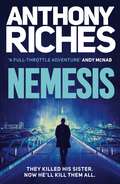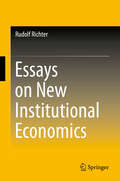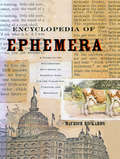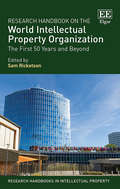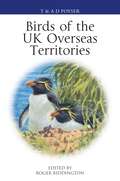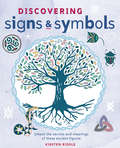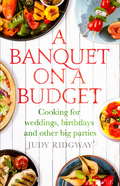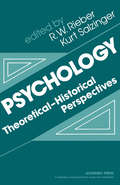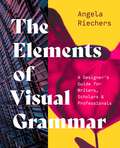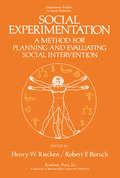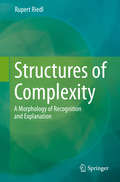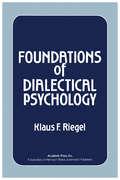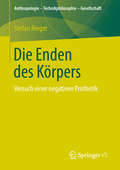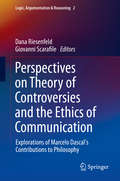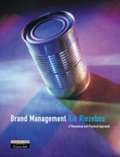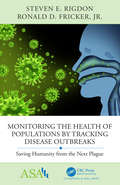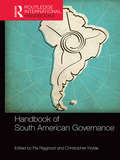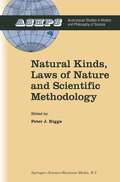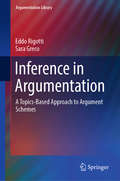- Table View
- List View
Nemesis (The Protector)
by Anthony RichesMickey Bale, a Met close protection officer, wants revenge on the mafia family who killed his sister. First in The Protector, a gripping British thriller series from Anthony Riches. 'Nemesis is a full-throttle adventure' ANDY McNAB'Fast-moving... The Bill meets Jack Reacher' THE TIMES Thriller of the MonthThey killed his sister. Now he'll kill them all. Mickey Bale is an elite close protection officer. That's why the Met police has given him the toughest job of all: guarding the Minister of Defence at a moment when Chinese-British relations have hit a deadly boiling point.And when Mickey's life isn't on the line for his work, he's taking his chances waging war on a powerful London gang family. Their dealer supplied a lethal ecstasy pill to his sister, and Mickey is determined to take them down, one at a time.But will he get away with it – or will his colleagues in the force realise that the man on an underworld killing spree is one of their own?'Nemesis is a full-throttle adventure that twists and turns from the corridors of power to London's gangland underbelly, propelled by a hero with a thirst for vengeance and the skillset to execute it' Andy McNab'Nemesis kicks like a 12-bore shotgun... A British thriller to rival Reacher' Giles Kristian'Mickey Bale is a Jack Reacher for a harder, faster, more assured millennium. Nemesis is the kind of book for which the word 'compelling' was coined' Manda Scott'Meet Mickey Bale – London's John Wick. A rocket-propelled grenade of a book, shot through with gallows humour. Guy Ritchie meets Lee Child' Robyn Young'This may be Riches' first contemporary-set novel but he throws his protagonist into a gladiatorial climax worthy of Ancient Rome' Shots
Essays on New Institutional Economics
by Rudolf RichterThis collection of essays comprises some of Rudolf Richter’s important contributions to research on New Institutional Economics (NIE). It deals with the central idea, principles, and methodology of New Institutional Economics and explores its relation to sociology and law. Other chapters examine applications of NIE to various microeconomic and macroeconomic issues in the face of uncertainty, from entrepreneurship to the euro crisis.
Encyclopedia of Ephemera: A Guide to the Fragmentary Documents of Everyday Life for the Collector, Curator and Historian
by Maurice Rickards Michael Twyman Sally De Beaumont Amoret TannerThe joy of finding an old box in the attic filled with postcards, invitations, theater programs, laundry lists, and pay stubs is discovering the stories hidden within them. The paper trails of our lives -- or ephemera -- may hold sentimental value, reminding us of great grandparents. They chronicle social history. They can be valuable as collectibles or antiques. But the greatest pleasure is that these ordinary documents can reconstruct with uncanny immediacy the drama of day-to-day life.The Encyclopedia of Ephemera is the first work of its kind, providing an unparalleled sourcebook with over 400 entries that cover all aspects of everyday documents and artifacts, from bookmarks to birth certificates to lighthouse dues papers. Continuing a tradition that started in the Victorian era, when disposable paper items such as trade cards, die-cuts and greeting cards were accumulated to paste into scrap books, expert Maurice Rickards has compiled an enormous range of paper collectibles from the obscure to the commonplace. His artifacts come from around the world and include such throw-away items as cigarette packs and crate labels as well as the ubiquitous faxes, parking tickets, and phone cards of daily life.As this major new reference shows, simple slips of paper can speak volumes about status, taste, customs, and taboos, revealing the very roots of popular culture.
Research Handbook on the World Intellectual Property Organization: The First 50 Years and Beyond (Research Handbooks in Intellectual Property series)
by Sam Ricketson2020 marks the 50th year of the coming into force of the World Intellectual Property Organization (WIPO) Convention 1967 and the formal establishment of WIPO. This unique and wide-ranging Research Handbook brings together eminent scholars and experts who assess WIPO's role and programmes during its first half-century, as well as discussing the challenges facing the organization as it enters its second. This comprehensive Research Handbook explores the history and development of WIPO from its conception, through the changing of its mission over time, to its current position as a largely self-financing specialized UN agency. Chapters examine WIPO’s education and technical assistance programmes, its relationship with the WTO, its interaction with emerging economies and WIPO’s role in treaty interpretation and substantive and procedural harmonization. The Research Handbook on the World Intellectual Property Organization will be a key resource for scholars of trade and development, and intellectual property. It will also be of value to intellectual property practitioners, government officials and non-governmental organizations concerned with intellectual property, trade, development, and human rights issues and advocacy.
On Translation (Thinking in Action)
by Paul RicoeurPaul Ricoeur was one of the most important philosophers of the twentieth century. In this short and accessible book, he turns to a topic at the heart of much of his work: What is translation and why is it so important? Reminding us that The Bible, the Koran, the Torah and the works of the great philosophers are often only ever read in translation, Ricoeur reminds us that translation not only spreads knowledge but can change its very meaning. In spite of these risk, he argues that in a climate of ethnic and religious conflict, the art and ethics of translation are invaluable. Drawing on interesting examples such as the translation of early Greek philosophy during the Renaissance, the poetry of Paul Celan and the work of Hannah Arendt, he reflects not only on the challenges of translating one language into another but how one community speaks to another. Throughout, Ricoeur shows how to move through life is to navigate a world that requires translation itself. Paul Ricoeur died in 2005. He was one of the great contemporary French philosophers and a leading figure in hermeneutics, psychoanalytic thought, literary theory and religion. His many books include Freud and Philosophy and Time and Narrative.
On Translation (Thinking in Action)
by Paul RicoeurPaul Ricoeur was one of the most important philosophers of the twentieth century. In this short and accessible book, he turns to a topic at the heart of much of his work: What is translation and why is it so important? Reminding us that The Bible, the Koran, the Torah and the works of the great philosophers are often only ever read in translation, Ricoeur reminds us that translation not only spreads knowledge but can change its very meaning. In spite of these risk, he argues that in a climate of ethnic and religious conflict, the art and ethics of translation are invaluable. Drawing on interesting examples such as the translation of early Greek philosophy during the Renaissance, the poetry of Paul Celan and the work of Hannah Arendt, he reflects not only on the challenges of translating one language into another but how one community speaks to another. Throughout, Ricoeur shows how to move through life is to navigate a world that requires translation itself. Paul Ricoeur died in 2005. He was one of the great contemporary French philosophers and a leading figure in hermeneutics, psychoanalytic thought, literary theory and religion. His many books include Freud and Philosophy and Time and Narrative.
Birds of the UK Overseas Territories
by Roger RiddingtonThe UK Overseas Territories (UKOTs) are scattered across the globe. Most are small islands or island complexes, occurring from the Caribbean to the furthest reaches of the South Atlantic, via the Indian and Pacific Oceans. In terms of global biodiversity, these territories are remarkably significant. Among landscapes that range from coral atolls, through mangroves and dry forests to the ice sheets of Antarctica, the UKOTs support no fewer than 45 species of birds currently considered to be globally threatened. They are also home to a third of all the world's breeding albatrosses, and nine of the world's 17 species of penguin. In a rapidly changing world, the UKOTs symbolise global crises in climate and biodiversity. Threats faced by their wildlife range from mortality of seabirds at sea through industrial fisheries, and on land as a result of introduced ground predators, to the utter devastation of hurricanes in the Caribbean, which provide a stark reminder of our changing climate. The human impact on the wildlife of our planet has been increasing for centuries, but the next few decades promise to be critical. This book explores the birds and other wildlife of each of the 14 UKOTs, with a particular focus on environmental threats and conservation priorities. Written by authors with a deep connection to the sites, this book represents an important stocktake of the biological richness of these special places in the early 21st century.
Discovering Signs and Symbols: Unlock the Secrets and Meanings of these Ancient Figures
by Kirsten RiddleA fascinating insight into the origins of ancient signs and symbols and how to harness their power to benefit your life.
A Banquet on a Budget: Cooking for weddings, birthdays and other big parties
by Judy RidgwayCatering for any large scale celebration can be daunting. Where will you hold the event? How much food will you need? When should you start the preparation? This book passes on the secrets of the trade to ensure that the preparation goes smoothly and that the food is just as good as the professionals can offer. It includes a master checklist for the preparations with general advice on choosing the food and drinks, buying in ready-made items, estimating quantities, hiring staff and equipment and other practical considerations. There are five complete menus and drinks suggestions for each type of event: a drinks party with canapes, a fork buffet, a finger buffet and a sit-down meal, with guests varying in number from twenty to sixty. Menus include full preparation plans and recipes. In total there are 120 plus recipes, some with variations.
Psychology: Theoretical–Historical Perspectives
by R. W. Rieber Kurt SalzingerPsychology: Theoretical-Historical Perspectives offers analysis, provided by different contributors, of the theoretical traditions in psychology. The compilation provides articles that discuss topics on the influences in the development of American psychology; the development of the concept of the self in psychology; the groundwork for psychology before the Civil War; and the influence of Darwin's evolutionary theories on psychology. Psychologists and students will find the book invaluable.
The Elements of Visual Grammar: A Designer's Guide for Writers, Scholars, and Professionals (Skills For Scholars Ser.)
by Angela RiechersA color-illustrated introduction to the basic principles of visual language that every content creator and consumer needs to knowThe right images capture attention, pique curiosity, and inspire viewers to stick around long enough to read any accompanying text. Nearly everyone today needs to use or understand images in communications of all kinds, from the most formal professional publication to the most casual social media post, and knowing the basics of visual language is essential for content creators and consumers alike. However, most people aren’t taught visual grammar unless they go into art- or design-related fields. The Elements of Visual Grammar explains image use in any media in practical terms for writers, scholars, and other professionals. Award-winning art director and design professor Angela Riechers offers a flexible set of principles and best practices for selecting images that work—and using them in the most persuasive way. The result is an indispensable guide for anyone who wants to learn how to work more successfully with images and words.Features more than 200 color illustrations—drawn from a wide range of styles, media, and eras—that demonstrate the principles of visual grammar and how images can support and enhance written contentDefines and illustrates the basic elements of images, describes how images function within text regardless of media, and explains how to choose images and integrate them with textIntroduces the practical, cultural, conceptual, and scientific factors that influence image useAnalyzes images by function and describes ways to employ symbolism, synecdoche, allegory, metaphor, analogy, and iconography
The Elements of Visual Grammar: A Designer's Guide for Writers, Scholars, and Professionals (Skills For Scholars Ser.)
by Angela RiechersA color-illustrated introduction to the basic principles of visual language that every content creator and consumer needs to knowThe right images capture attention, pique curiosity, and inspire viewers to stick around long enough to read any accompanying text. Nearly everyone today needs to use or understand images in communications of all kinds, from the most formal professional publication to the most casual social media post, and knowing the basics of visual language is essential for content creators and consumers alike. However, most people aren’t taught visual grammar unless they go into art- or design-related fields. The Elements of Visual Grammar explains image use in any media in practical terms for writers, scholars, and other professionals. Award-winning art director and design professor Angela Riechers offers a flexible set of principles and best practices for selecting images that work—and using them in the most persuasive way. The result is an indispensable guide for anyone who wants to learn how to work more successfully with images and words.Features more than 200 color illustrations—drawn from a wide range of styles, media, and eras—that demonstrate the principles of visual grammar and how images can support and enhance written contentDefines and illustrates the basic elements of images, describes how images function within text regardless of media, and explains how to choose images and integrate them with textIntroduces the practical, cultural, conceptual, and scientific factors that influence image useAnalyzes images by function and describes ways to employ symbolism, synecdoche, allegory, metaphor, analogy, and iconography
Social Experimentation: a Method for Planning and Evaluating Social Intervention
by Henry W. Riecken Robert F. BoruchSocial Experimentation: A Method for Planning and Evaluating Social Intervention summarizes the available knowledge about how randomized experiments might be used in planning and evaluating ameliorative social programs. The book presents various aspects of social experimentation - design, measurement, execution, sponsorship, and utilization of results. Chapters are devoted to topics on experimentation as a method of program planning and evaluation; experimental design and analysis; institutional and political factors in social experimentation; and aspects of time and institutional capacity. Sociologists will find the book a valuable piece of reference.
Structures of Complexity: A Morphology of Recognition and Explanation
by Rupert RiedlIn this book, the author Rupert Riedl investigates the structural and functional correlations of issues considered as "complex". He brilliantly analyzes the definition of complexity, the occurrence of complexity, the meaning of complexity, and last-but-not-least the way complexity is dealt with professionally.In recent years, our view of the world has been split into ever smaller segments – in part due to the increasing importance of the natural sciences and their associated analytical power. This calls for once again focusing on complexity and the holistic aspects, on interdisciplinary and synoptic approaches. This book is a translation of the original German version “Strukturen der Komplexität”, which was published in 2000. The discussion of complexity from the perspective of a biologist has long been overdue when it was published and is still up-to-date.
Foundations of Dialectical Psychology
by Klaus F. RiegelFoundations of Dialectical Psychology is a compilation of the writings of Klaus F. Riegel on dialectical psychology. The book presents chapters discussing such topics as the dialectics of human development; history of dialectical psychology; temporal organization of dialogues; and the analysis of the concept of crisis and its underlying philosophical model and ideology. Psychologists and students will find the book invaluable.
Die Enden des Körpers: Versuch einer negativen Prothetik (Anthropologie – Technikphilosophie – Gesellschaft)
by Stefan RiegerDas Buch untersucht den Körper in doppelter Perspektive: Zum einen nimmt es den Körper in einem geometrischen Sinne beim Wort und fragt danach, welche realen und welche imaginären Grenzen dieser hat, wie weit er in reale, augmentierte oder virtuelle Räume hineinreicht, welche Interventionen an seinen Grenzen und Oberflächen ansetzen und nicht zuletzt, welche Aushandlungen sich an seinen Enden, an seinen räumlichen Umgrenzungen und an seiner vermeintlichen Geschlossenheit anlagern. In den Blick geraten so jene Kontaktpunkte, Schnittstellen und Interfaces, die den Körper mit einer Welt verbinden (z.B. im Fall smarter Wohn- und Arbeitsumgebungen) oder ihn von ihr abgrenzen. Der zweite Zugang handelt von der zeitlichen Dimension des Körpers, also von all den Szenarien des Endes, des Untergangs, des Verschwindens und Überflüssigwerdens, die dem Körper prognostiziert wurden. Diesen Szenarien steht eine Vielzahl von Strategien gegenüber, die darauf abzielen, den scheinbar verlorenen Körper wieder zu restituieren.
Perspectives on Theory of Controversies and the Ethics of Communication: Explorations of Marcelo Dascal's Contributions to Philosophy (Logic, Argumentation & Reasoning #2)
by Dana Riesenfeld Giovanni ScarafileAssembling an unprecedented range of considered responses to the noted contributions to philosophy made by Marcelo Dascal, this collection comprises the work of his many friends, colleagues and former students. Beginning with a series of articles on Dascal’s influential insights on philosophical controversy, this volume continues with explorations of Dascal’s celebrated scholarship on Liebnitz, before moving on to papers dealing with his philosophy of language, including interpretations by Dresner and Herring on the phenomenon of emoticons. Taken as a whole, they provide a compelling commentary on Dascal’s prolific and voluminous publications and include fresh perspectives on the theory of argumentation and the ethics of communication. The material collected here extends to political philosophy, such as Morris-Reich's paper exploring the ways in which German social scientists confront issues of antisemitism, the psychology of genius, and the origins of norms in society and culture. Much of the analysis is directly connected to, or influenced by, the philosophical themes, ideas and concepts developed throughout the years by Marcelo Dascal, while others have a looser connection to his work. All of them, however, attest to the remarkable and multifaceted philosophical persona of Marcelo Dascal, who is the guiding light of the rich conceptual dialogue running through this book.
Brand Management: A Theoretical And Practical Approach (PDF)
by Rik RiezebosSince the 1980s, brands and the management of brands have attracted an enormous amount of interest. Companies became acutely aware of how their brand image could mean the difference between success and failure . Brand Management: A theoretical and practical approach gives insight into this phenomenon, moving from the history of the brand to how to develop, manage and protect brands. Brand Management: A theoretical and practical approach takes a decision-making approach to the subject, structured around the decisions a brand or product manager would face when considering their own brand strategy, covering topics such as design, judicial protection, adverse publicity and financial-brand valuation.
Monitoring the Health of Populations by Tracking Disease Outbreaks: Saving Humanity from the Next Plague (ASA-CRC Series on Statistical Reasoning in Science and Society)
by Steven E Rigdon Ronald D. Fricker, Jr.With COVID-19 sweeping across the globe with near impunity, it is thwarting governments and health organizations efforts to contain it. Not since the 1918 Spanish Flu have citizens of developed countries experienced such a large-scale disease outbreak that is having devastating health and economic impacts. One reason such outbreaks are not more common has been the success of the public health community, including epidemiologists and biostatisticians, in identifying and then mitigating or eliminating the outbreaks. Monitoring the Health of Populations by Tracking Disease Outbreaks: Saving Humanity from the Next Plague is the story of the application of statistics for disease detection and tracking. The work of public health officials often crucially depends on statistical methods to help discern whether an outbreak may be occurring and, if there is sufficient evidence of an outbreak, then to locate and track it. Statisticians also help collect critical information, and they analyze the resulting data to help investigators zero in on a cause for a disease. With the recent outbreaks of diseases such as swine and bird flu, Ebola, and now COVID-19, the role that epidemiologists and biostatisticians play is more important than ever. Features: · Discusses the crucial roles of statistics in early disease detection. · Outlines the concepts and methods of disease surveillance. · Covers surveillance techniques for communicable diseases like Zika and chronic diseases such as cancer. · Gives real world examples of disease investigations including smallpox, syphilis, anthrax, yellow fever, and microcephaly (and its relationship to the Zika virus). Via the process of identifying an outbreak, finding its cause, and developing a plan to prevent its reoccurrence, this book tells the story of how medical and public health professionals use statistics to help mitigate the effects of disease. This book will help readers understand how statisticians and epidemiologists help combat the spread of such diseases in order to improve public health across the world.
Monitoring the Health of Populations by Tracking Disease Outbreaks: Saving Humanity from the Next Plague (ASA-CRC Series on Statistical Reasoning in Science and Society)
by Steven E Rigdon Ronald D. Fricker, Jr.With COVID-19 sweeping across the globe with near impunity, it is thwarting governments and health organizations efforts to contain it. Not since the 1918 Spanish Flu have citizens of developed countries experienced such a large-scale disease outbreak that is having devastating health and economic impacts. One reason such outbreaks are not more common has been the success of the public health community, including epidemiologists and biostatisticians, in identifying and then mitigating or eliminating the outbreaks. Monitoring the Health of Populations by Tracking Disease Outbreaks: Saving Humanity from the Next Plague is the story of the application of statistics for disease detection and tracking. The work of public health officials often crucially depends on statistical methods to help discern whether an outbreak may be occurring and, if there is sufficient evidence of an outbreak, then to locate and track it. Statisticians also help collect critical information, and they analyze the resulting data to help investigators zero in on a cause for a disease. With the recent outbreaks of diseases such as swine and bird flu, Ebola, and now COVID-19, the role that epidemiologists and biostatisticians play is more important than ever. Features: · Discusses the crucial roles of statistics in early disease detection. · Outlines the concepts and methods of disease surveillance. · Covers surveillance techniques for communicable diseases like Zika and chronic diseases such as cancer. · Gives real world examples of disease investigations including smallpox, syphilis, anthrax, yellow fever, and microcephaly (and its relationship to the Zika virus). Via the process of identifying an outbreak, finding its cause, and developing a plan to prevent its reoccurrence, this book tells the story of how medical and public health professionals use statistics to help mitigate the effects of disease. This book will help readers understand how statisticians and epidemiologists help combat the spread of such diseases in order to improve public health across the world.
Handbook of South American Governance (Routledge International Handbooks)
by Pía Riggirozzi Christopher WyldeGovernance in South America is signified by strategies pursued by state and non-state actors directed to enhancing (some aspect of) their capabilities and powers of agency. It is about the spaces and the practices available, demanded or created to ‘make politics happen’. This framework lends explanatory power to understand how governance has been defined and practiced in South America. Pía Riggirozzi and Christopher Wylde bring together leading experts to explore what demands and dilemmas have shaped understanding and practice of governance in South America in and across the region. The Handbook suggests that governance dilemmas of inequitable and unfulfilled political economic governance in South America have been constant historical features, yet addressed and negotiated in different ways. Building from an introduction to key issues defining governance in South America, this Handbook proceeds to examine institutions, actors and practices in governance focusing on three core processes: evolution of socio-economic and political justice claims as central to the demands of governance; governance frameworks foregrounding particular issues and often privileging particular forms of political practice; and iterative and cumulative processes leading to new demands of governance addressing recognition and identity politics. This Handbook will be a key reference for those concerned with the study of South America, South American political economy, regional governance, and the politics of development.
Handbook of South American Governance (Routledge International Handbooks)
by Pia Riggirozzi Christopher WyldeGovernance in South America is signified by strategies pursued by state and non-state actors directed to enhancing (some aspect of) their capabilities and powers of agency. It is about the spaces and the practices available, demanded or created to ‘make politics happen’. This framework lends explanatory power to understand how governance has been defined and practiced in South America. Pía Riggirozzi and Christopher Wylde bring together leading experts to explore what demands and dilemmas have shaped understanding and practice of governance in South America in and across the region. The Handbook suggests that governance dilemmas of inequitable and unfulfilled political economic governance in South America have been constant historical features, yet addressed and negotiated in different ways. Building from an introduction to key issues defining governance in South America, this Handbook proceeds to examine institutions, actors and practices in governance focusing on three core processes: evolution of socio-economic and political justice claims as central to the demands of governance; governance frameworks foregrounding particular issues and often privileging particular forms of political practice; and iterative and cumulative processes leading to new demands of governance addressing recognition and identity politics. This Handbook will be a key reference for those concerned with the study of South America, South American political economy, regional governance, and the politics of development.
Natural Kinds, Laws of Nature and Scientific Methodology (Studies in History and Philosophy of Science #12)
by Peter J. RiggsAustralia and New Zealand boast an active community of scholars working in the field of history, philosophy and social studies of science. 'Australasian Studies in History and Philosophy of Science' aims to provide a distinctive publication outlet for their work. Each volume comprises a group of essays on a connected theme, edited by an Australian or a New Zealander with special expertise in that particular area. In each volume, a majority of the contributors is from Australia or New Zealand. CQntributions from elsewhere are by no means ruled out, however, and are indeed actively encouraged wherever appropriate to the balance of the volume in question. Earlier volumes in the series have been welcomed for significantly advancing the discussion of the topics they have dealt with. The present volume will I believe be greeted equally enthusiastically by readers in many parts of the world. R. W. Home General Editor Australasian Studies in History and Philosophy of Science Vll ACKNOWLEDGEMENTS The stimulus to assemble this collection of essays grew from a number of interesting seminars conducted during the academic years 1991-92, under the auspices of the Victorian Centre for the History and Philosophy of Science (which is centred at the Bundoora campus of La Trobe University in the outer suburbs of Melbourne). Some of the seminar presentations to the Victorian Centre for HPS and other articles awaiting pUblication have been made available as part of the Pre-print Series of the Victorian Centre.
Inference in Argumentation: A Topics-based Approach To Argument Schemes (Argumentation Library #34)
by Eddo Rigotti Sara GrecoThis book investigates the role of inference in argumentation, considering how arguments support standpoints on the basis of different loci. The authors propose and illustrate a model for the analysis of the standpoint-argument connection, called Argumentum Model of Topics (AMT). A prominent feature of the AMT is that it distinguishes, within each and every single argumentation, between an inferential-procedural component, on which the reasoning process is based; and a material-contextual component, which anchors the argument in the interlocutors’ cultural and factual common ground. The AMT explains how these components differ and how they are intertwined within each single argument. This model is introduced in Part II of the book, following a careful reconstruction of the enormously rich tradition of studies on inference in argumentation, from the antiquity to contemporary authors, without neglecting medieval and post-medieval contributions. The AMT is a contemporary model grounded in a dialogue with such tradition, whose crucial aspects are illuminated in this book.
